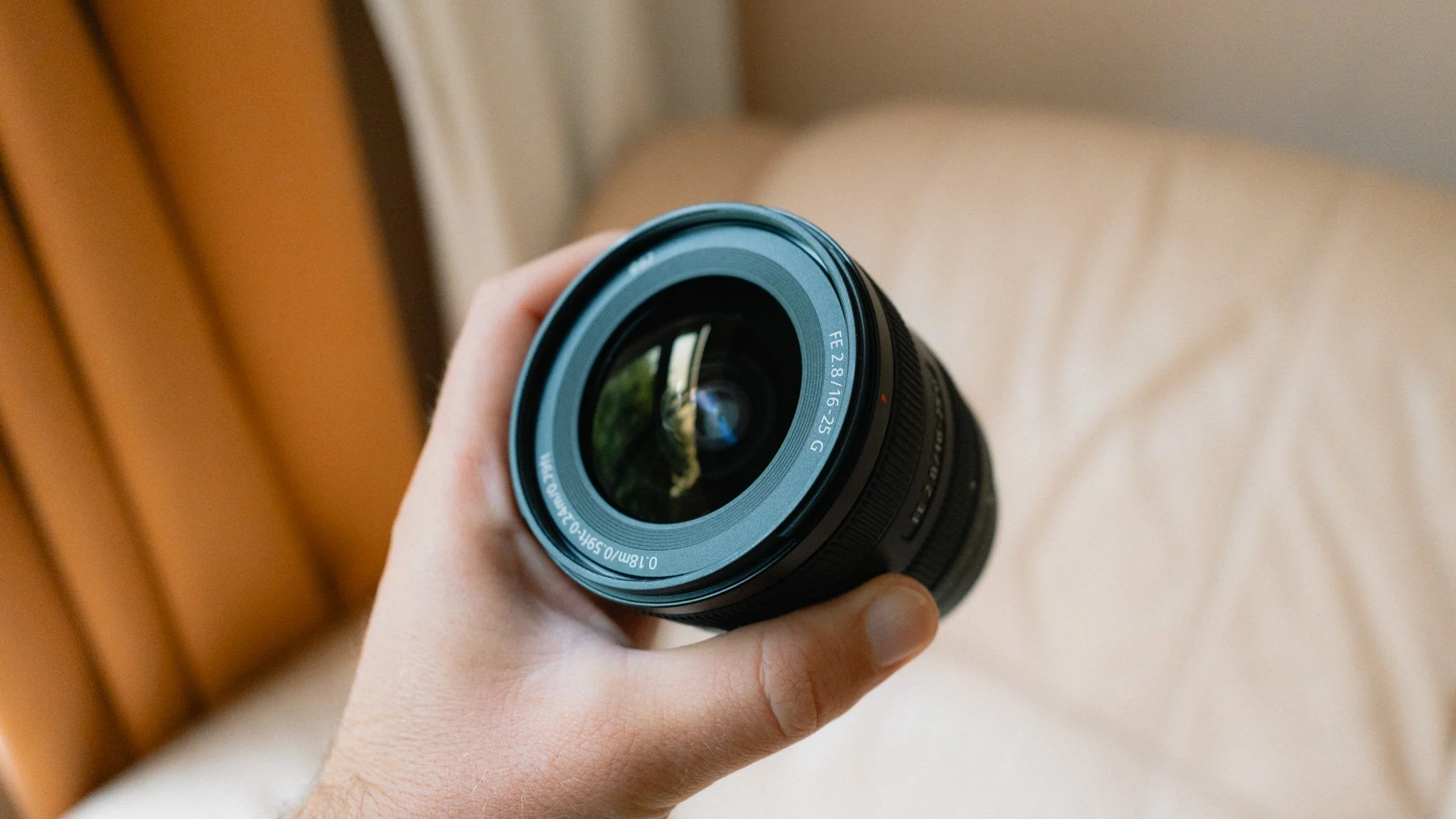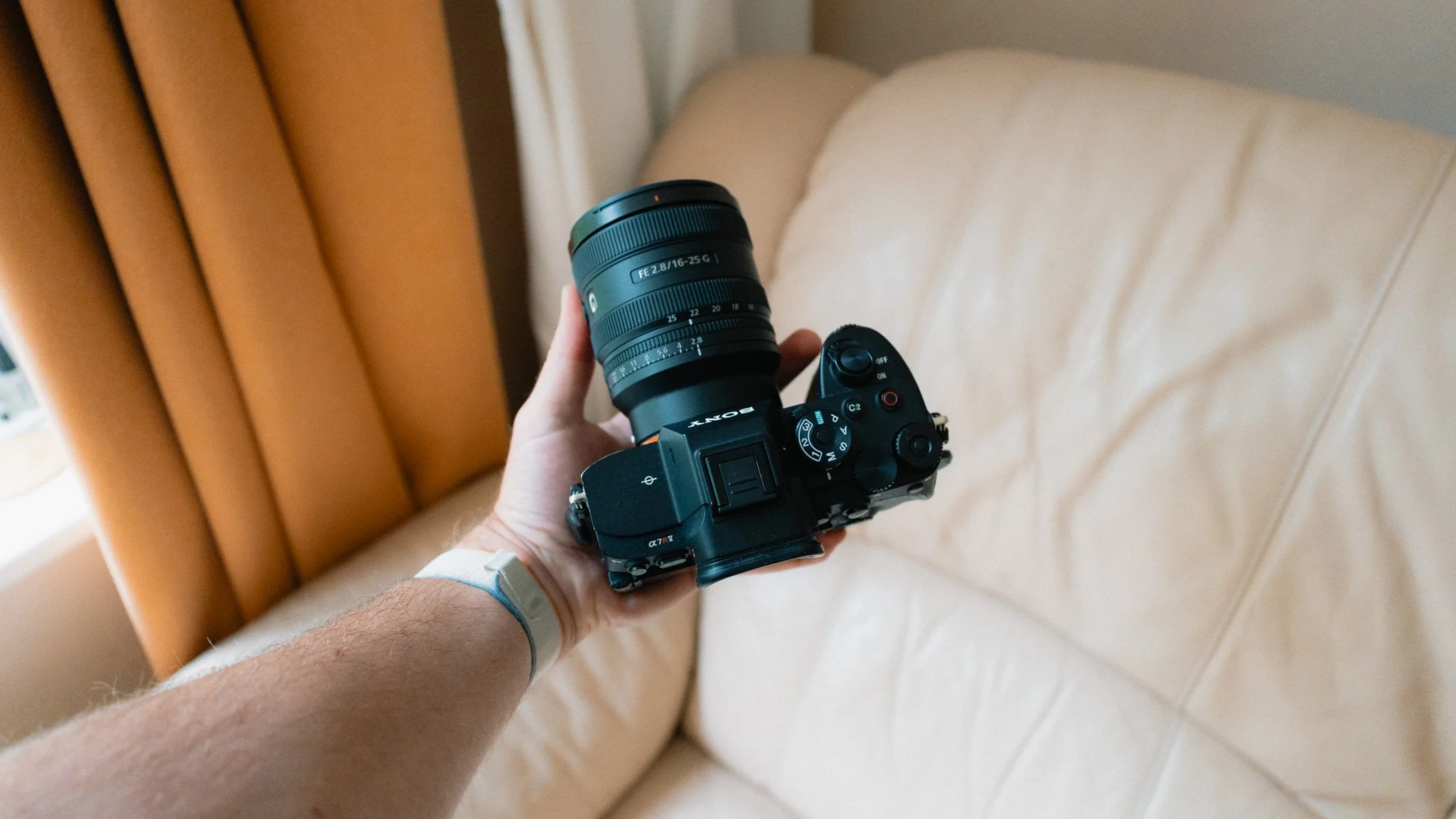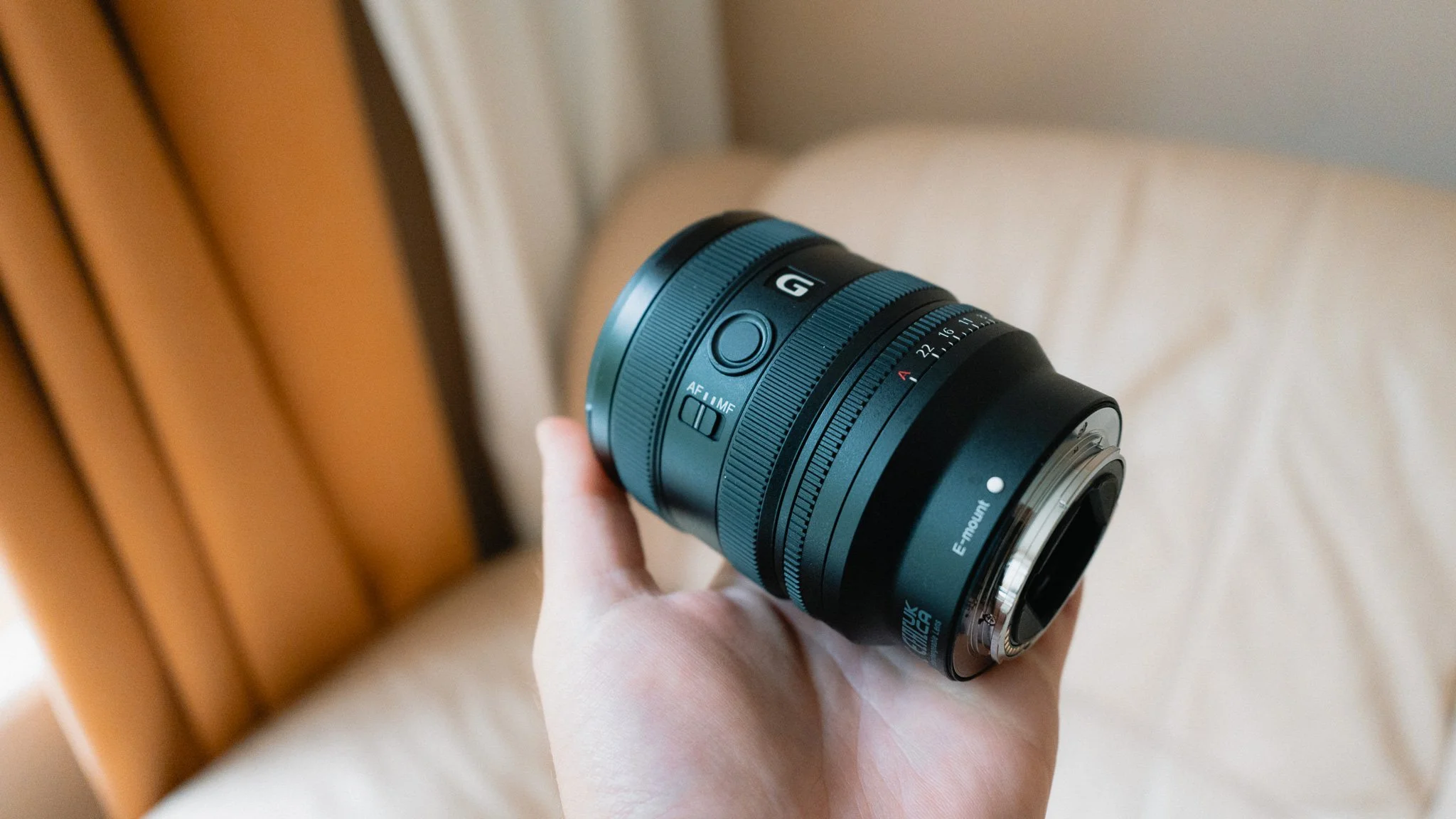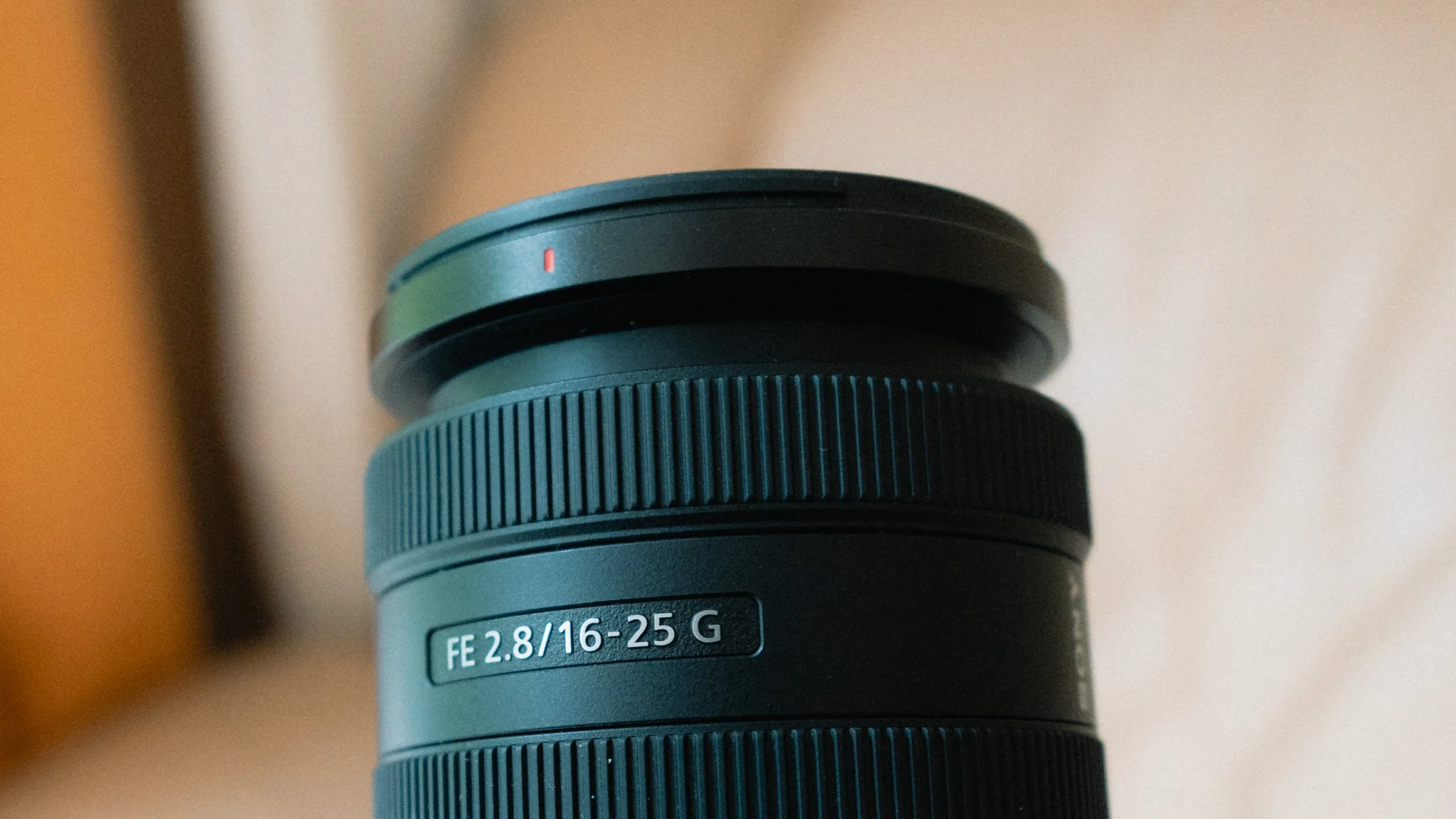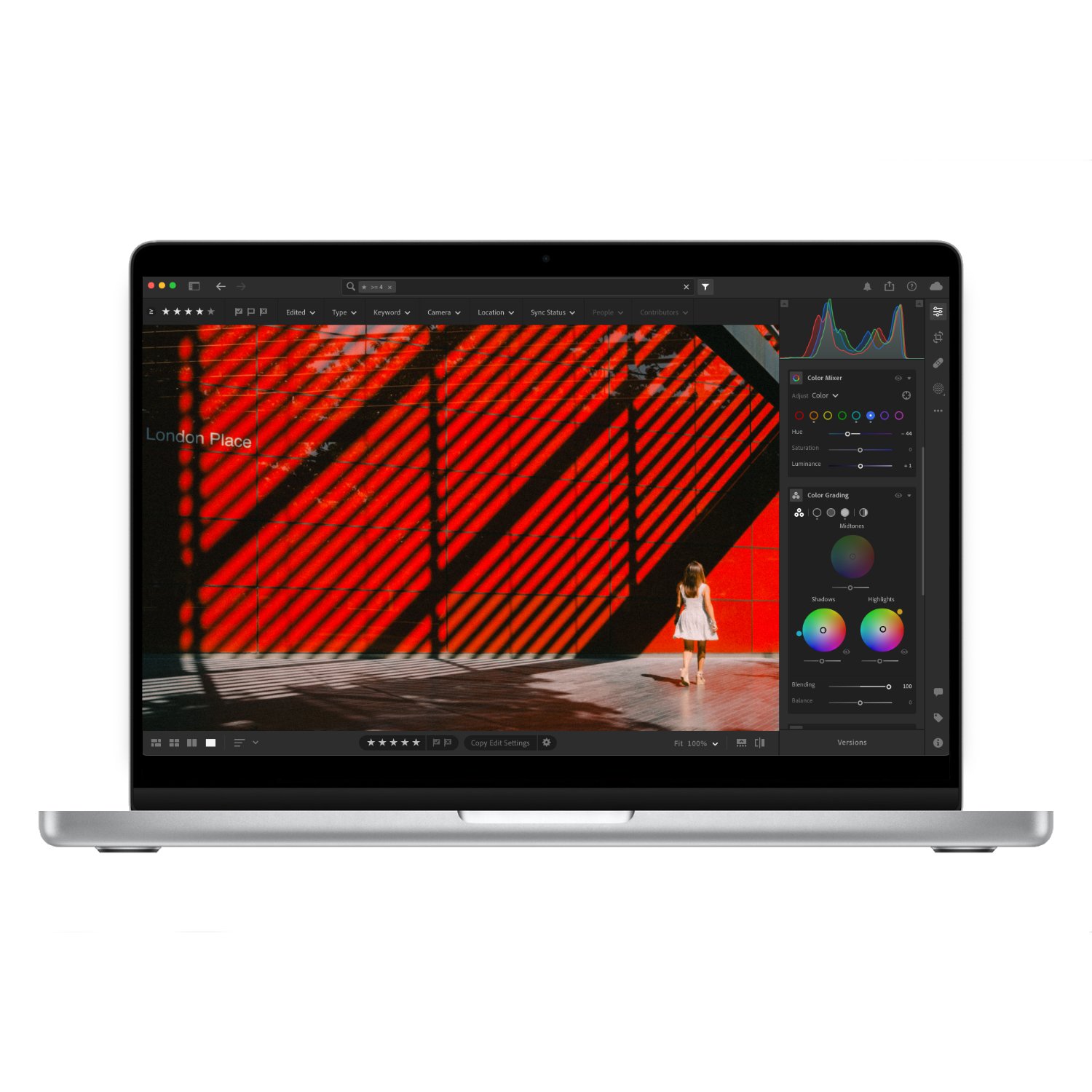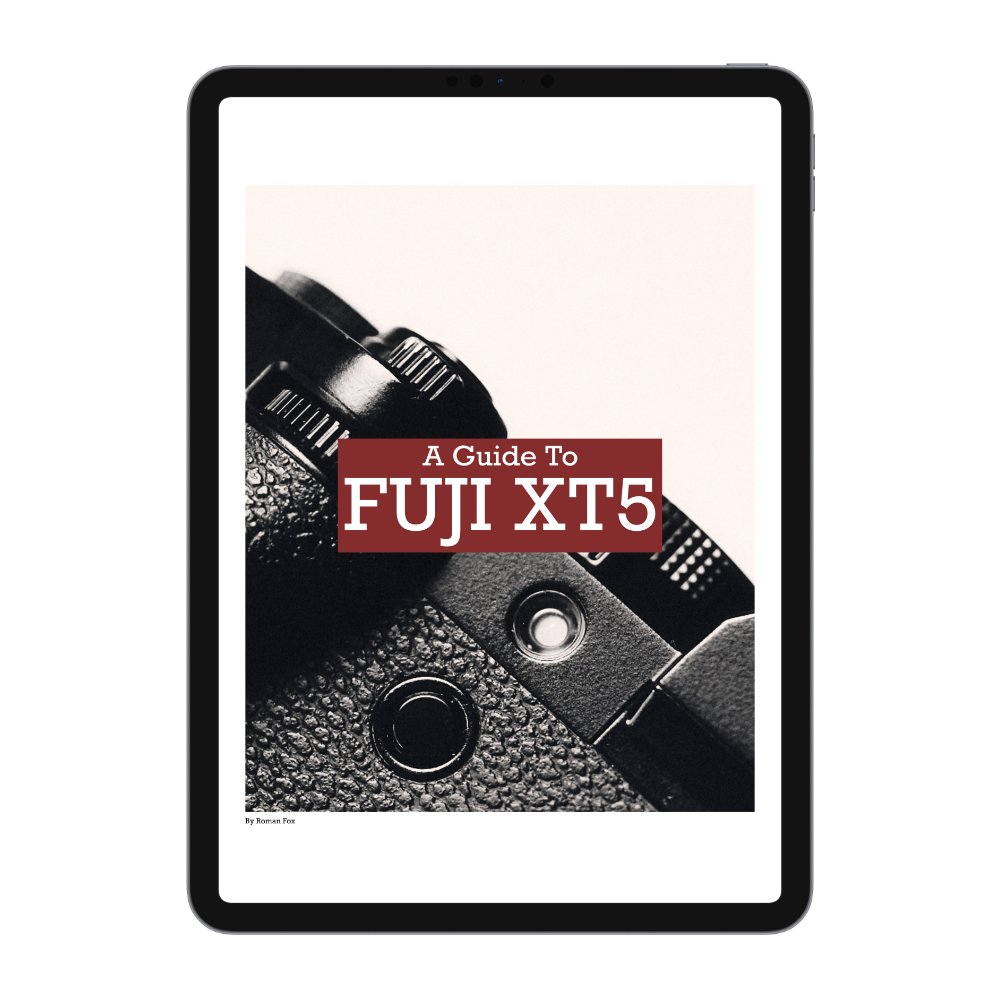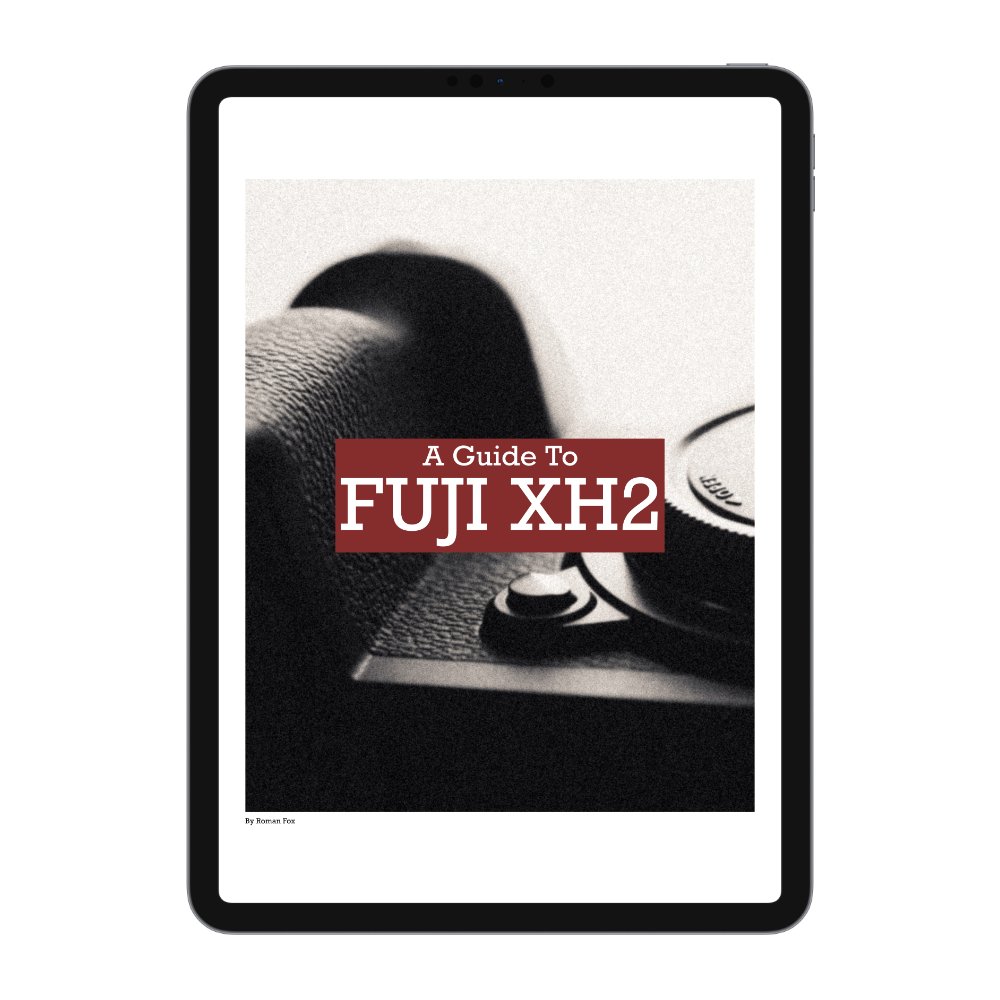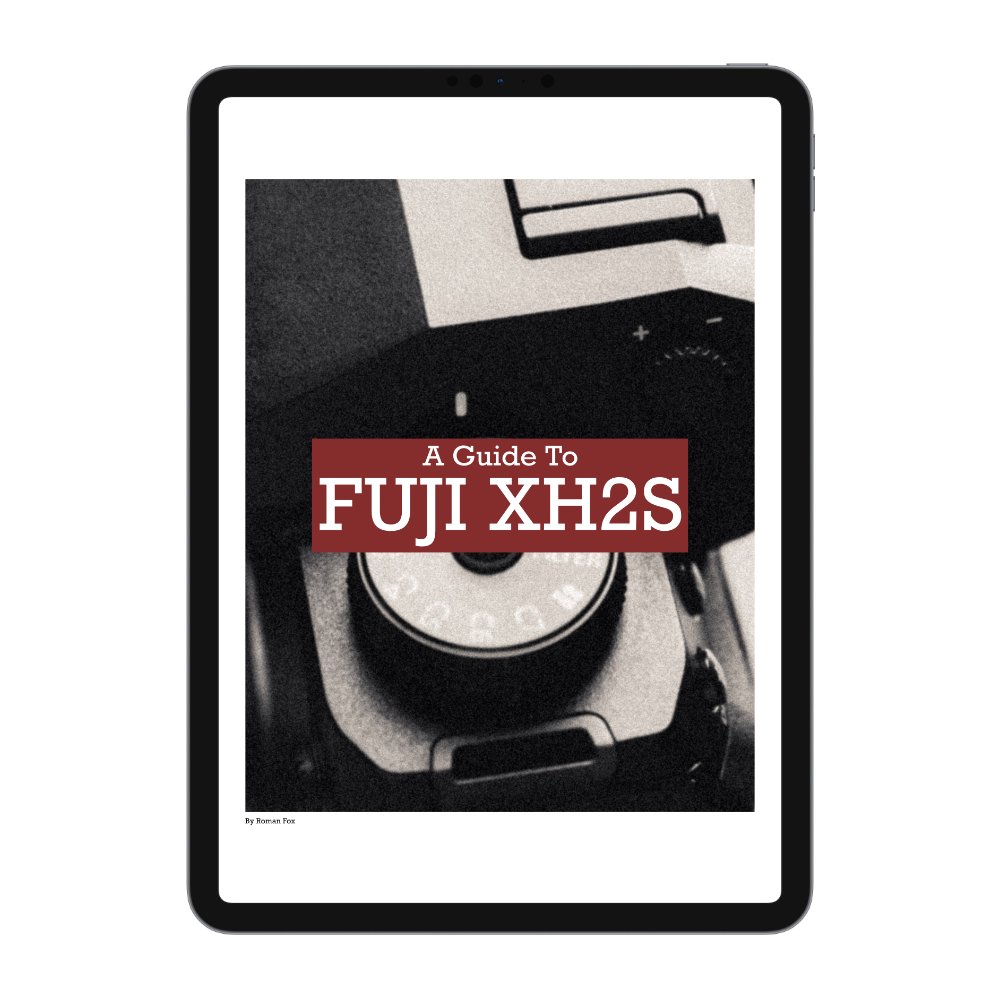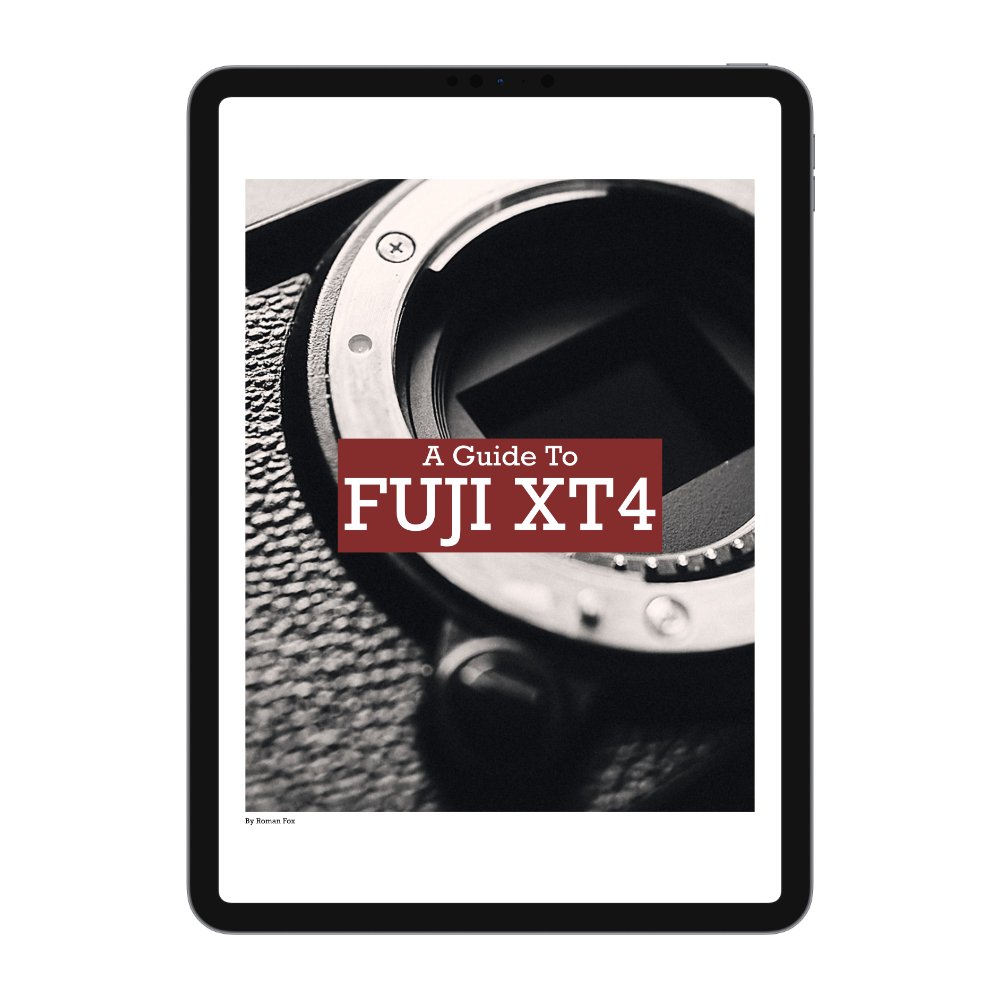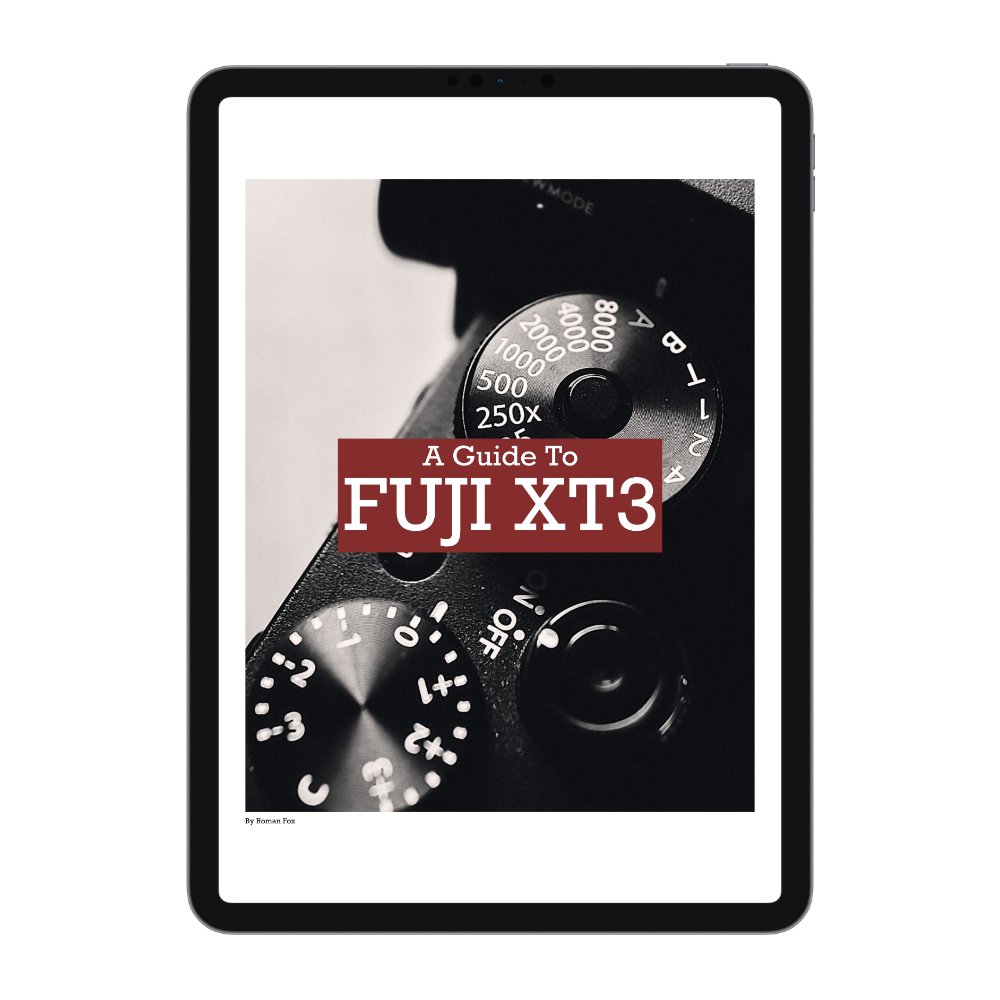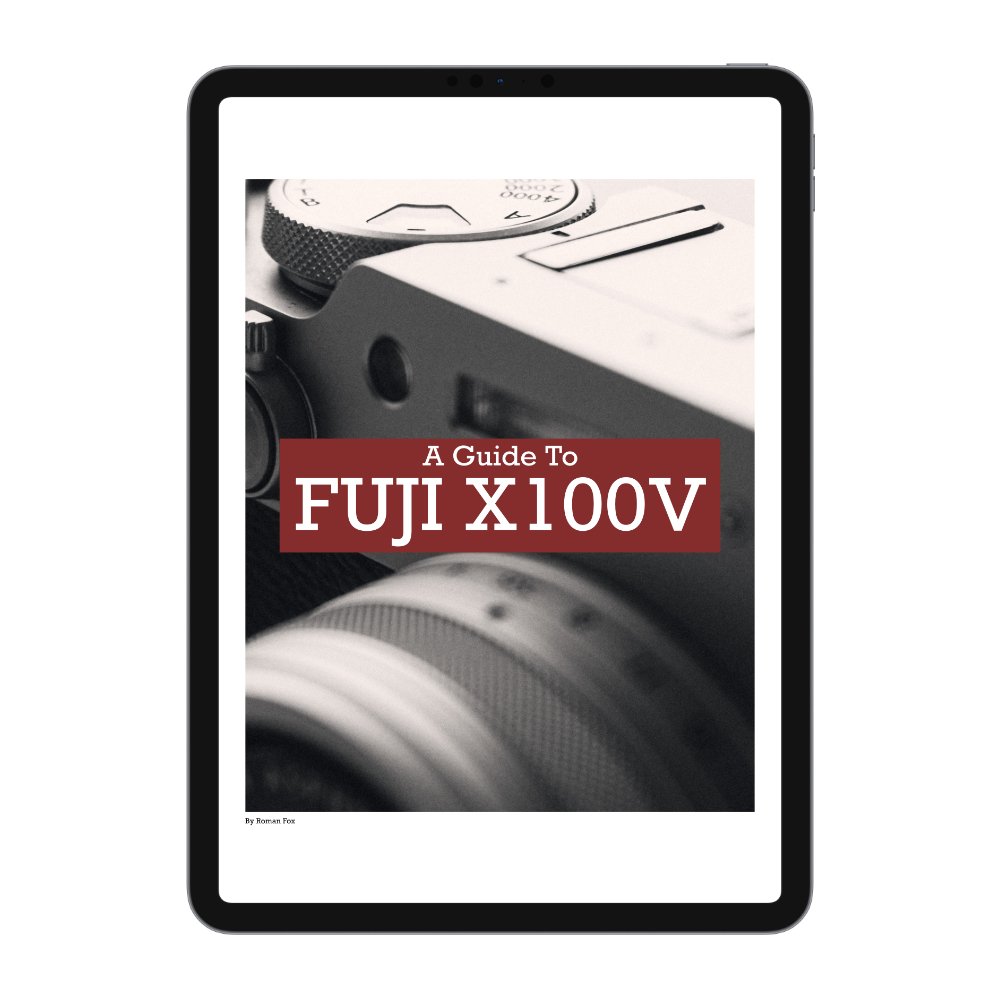Sony FE 16-25 f2.8 G First Impressions
In this blog, I will share with you my first impressions of the Sony 16-25 f/2.8 zoom lens. Although I’ve owned this lens for a while, I haven’t used it as often as some of the others, so this blog is an initial look and not a full review. The full review will come later after more extensive use in different conditions. For clarity, I purchased this lens with my own money, and I have no affiliations with Sony.
Purpose
This is a very interesting lens because, just like the 24-50 f/2.8 from Sony, it’s reversed. Typically, lenses start wide and you zoom in, so on its bigger brother, the 16-35, the lens starts at 16mm and zooms into 35mm. This one starts at 25mm and when you extend the barrel, you actually zoom out to an eventual 16mm. It’s a very unique design that I haven’t seen implemented anywhere else, and while it’s not for everyone, there will be a few who benefit from this approach. If you find yourself mostly shooting at around 24mm and zooming out now and again, then this lens would be ideal given its more compact form is closer to your focal length. Of course, if you tend to shoot wider more often, then you would always have to extend the barrel.
Build Quality
The lens feels solid, with a sturdy all-metal build. The focus dial is smooth and well-damped. The aperture dial has solid, distinct clicks. All buttons and dials feel very premium. Overall, the build quality seems great; however, this is something that will require time and heavy use to fully evaluate. The lens comes with weather sealing, and I got to test it on my recent trip to Hong Kong where I got absolutely drenched. I stayed outside shooting, and the lens/camera got soaked. I did not experience any issues.
Size & Weight
Aside from the inverted operation, size and weight are the two biggest advantages of this line of lenses. Compared to the 16-35, the 16-25 is much smaller and lighter. It’s actually very similar to the 35mm f/1.4, and even takes the same filter thread. While this lens feels the best on bigger bodies such as the A7R, it’s still totally fine on a smaller system like the A7C. Finally, the barrel extension isn’t that long, which helps maintain a small footprint even when fully extended.
Features
This lens has all the essentials you’d expect on a G series lens. You get one custom button that can be programmed to a range of different tasks. I have it set to temporarily switch to manual focus when held down. This allows me to engage the button with one finger, and use the other to turn the focus wheel and make minor adjustments in difficult focusing conditions such as reflections and abstract scenes. I wish it had two of these buttons like some other lenses, but I assume they left that out due to size or cost. You get an AF/MF switch and a de-click switch for the aperture. This allows for click-free and smooth aperture adjustment for video. The aperture ring is solid, the lens zooms in and out smoothly, and the focus dial is well-damped.
Image Quality
All modern lenses have fantastic image quality, and I feel we’re at the point where any modern lens above £500 will produce good results. I can’t say anything specific about the 16-25 f/2.8. The image is tack-sharp, the bokeh is nice, and the colours render as they should. No issues at all
AF Performance
The AF is top-notch thanks to two linear motors. It’s silent, fast, and reliable. However, just like image quality, this is hardly a surprise. Nothing specific I can say about the AF – it works every single time exactly how you’d expect.
Summary
This is a very unique lens and one not many people will like. However, there’s a subset of photographers and videographers who would find this quirky setup beneficial. If you tend to spend most of your time around 24mm, and sometimes zoom out for wider shots, then this is a perfect lens for you. If, however, you spend more time at the wider end, then perhaps you might find the constant need to extend the barrel tiresome. Having briefly used a 16-35, I much prefer this lens due to the design and form factor.




